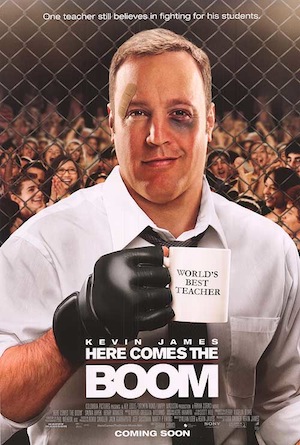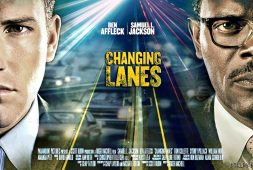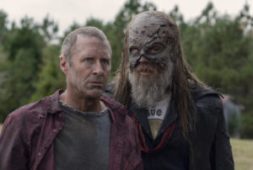 Main Point: God desires to use us to help and heal one another.
Main Point: God desires to use us to help and heal one another.
The Movie Clip: Here Comes the Boom
What happens when a school is forced to make massive budget cuts, causing a teacher to lose his job in the process? A co-worker decides to moonlight in the UFC to help save his job, of course! That’s the basics behind Kevin James’ hit comedy Here Comes the Boom.
Rick Voss (Kevin James) is a biology teacher by day, and UFC underdog by night. Helped by Marty (Henry Winkler), Nurse Bella (Selma Hayek), and others, Mr. Voss battles the odds – and the opponents – to help his friend keep his job.
Not only is the film hilarious, but the movie is rated PG and is completely free of any innuendo.
Introducing the Clip:
If you saw Here Comes the Boom, you know it’s about a teacher who tries to save his co-worker’s job by making money in UFC fights after class. The film was absolutely hilarious, and totally clean, and also provided a few life lessons that are very helpful to you and me. I want to show you one of those lessons right now. In this clip, Mr. Voss, the teacher/fighter, has just been brought back to health by the school nurse following an injury. He takes that lesson into his biology class to share with his kids, but you and I can see even greater and deeper meaning in his lesson. Take a look.
Note: This film is available for rent or purchase; pick up a copy and cue it up to the scene mentioned below.
Scene Script:
BEGIN CLIP AT 0 HOURS 59 MINUTES AND 09 SECONDS (in Chapter 9).
(This clip is long and has lots of fast-paced dialogue. The key is that Mr. Voss asks his students questions about cells, the overall life system, and healing. In essence, what they learn is that when cells work together to heal one of the hurting cells, the whole system can be restored…like when a cut heals.)
END CLIP AT 1 HOUR 02 MINUTES AND 01 SECOND.
Transitional Statement:
In this clip, Mr. Voss talked about healing from a scientific standpoint, but what he focused on was how important the other cells were to the hurting cell’s recovery. He said that the cells must get into a rhythm and work together, or else the whole system shuts down…which leads to death. He also said that full recovery was possible if cells worked together and came to one another’s aid. That’s exactly what life is like in the Church. When we are doing great, when we are healthy, we need to be together. When one of us is hurting, when we are unhealthy, we still need to be together so that we can be healed. That’s God’s plan, by the way. He often uses us to help and heal each other. Let’s talk about that from a biblical perspective for a few minutes.
Divide into Small Groups:
Let’s go ahead and split up into our discussion groups, and then afterward we’ll come back together for a final word.
CLICK HERE for a quick training article on how to maximize your small groups using our small group format—a great resource to equip your small group leaders.
Discussion Questions:
- AROUND THE CIRLCE: As we get started, let’s all take a second to share our names and our favorite class at school.
- ASK SOMEONE: What did Mr. Voss (and Malia) say happened to stagnating cells?
- ASK A FEW: Mr. Voss also said that “all that decays can be restored.” Beyond science, is this true of you and me? Why or why not?
- ASK A FEW: Brian said a cut that heals was an example of cells healing other cells. What is an example of you and me healing one another?
- ASK A FEW: Mr. Voss said that sometimes, when cells are hurting, other cells just assume that they will get help from somewhere else. Have you ever seen someone hurting, and just assumed that they would get help from somewhere else? Why or why not?
- ASK A FEW: Mr. Voss also said that the beginning of the restorative process was when cells get into a rhythm. What do you think is the beginning of our restorative process?
- ASK A FEW: What was Martinez’ answer when Mr. Voss asked him what would happen if all the cells worked together? (Leaders – He said the entire system is healed.)
- ASK A FEW: Name some ways God has healed people in the past.
- ASK A FEW: Cells in our bodies don’t care whether they are part of the foot, heart, gall bladder, or brain. Do you think you and I should get concerned about what part of the body we are? Why or why not?
- ASK A FEW: Let’s go back to rhythm for a moment. It’s clear that our bodies function in rhythm when we’re healthy. But do we function in rhythm as a youth group? Why or why not?
- ASK A FEW: What do you think the Apostle Paul meant when he wrote, “God has so composed the body, giving honor to the part that lacked it”?
- ASK A FEW: In verse 26, Paul writes, “If one member suffers, all suffer together.” Can you give an example of that in our group?
- ASK A FEW: Likewise, he says, “If one member is honored, all rejoice together.” Can you give an example of that in our group?
- ASK A FEW: How does suffering together and rejoicing together bring about healing?
- ASK A FEW: What do you think will happen if we do not rejoice and suffer together?
- AROUND THE CIRLCE: Who will you rejoice with or suffer with this week, and why?
Read the following passage:
1 Corinthians 12:14-27 (NIV)
For the body does not consist of one member but of many. 15 If the foot should say, “Because I am not a hand, I do not belong to the body,” that would not make it any less a part of the body. 16 And if the ear should say, “Because I am not an eye, I do not belong to the body,” that would not make it any less a part of the body. 17 If the whole body were an eye, where would be the sense of hearing? If the whole body were an ear, where would be the sense of smell? 18 But as it is, God arranged the members in the body, each one of them, as he chose. 19 If all were a single member, where would the body be? 20 As it is, there are many parts, yet one body. 21 The eye cannot say to the hand, “I have no need of you,” nor again the head to the feet, “I have no need of you.” 22 On the contrary, the parts of the body that seem to be weaker are indispensable, 23 and on those parts of the body that we think less honorable we bestow the greater honor, and our unpresentable parts are treated with greater modesty, 24 which our more presentable parts do not require. But God has so composed the body, giving greater honor to the part that lacked it, 25 that there may be no division in the body, but that the members may have the same care for one another. 26 If one member suffers, all suffer together; if one member is honored, all rejoice together. 27 Now you are the body of Christ and individually members of it.
Wrap Up:
The clip we watched was a funny one, and probably makes us wish that our science teacher was more like Mr. Voss. But regardless of his antics, he made a really important point: healthy cells are supposed to help unhealthy cells come back to life.
That’s the exact same thing that God had in mind when He put you and I together! Let me remind you that the Bible passage we talked about tonight had everything to do with our bodies. In fact, Paul used our body as an image to talk about our spiritual lives. He said that the body must work together in order to function in a healthy manner. All of us know that. But he went on to make his point that you and I in this Body called the Church must do the same.
The point I want to focus on as we wrap up is this: if we are healthy and whole and rejoicing right now, we need to invite others to join in with us on our celebration. But if we are sick, unhealthy, or without joy, then we need to ask others to help us and be with us. That’s what God planned for us to do because sometimes, God uses us to bring about healing in other people’s lives.
So, no matter who you are right now, you fall into one of those two groups. You’ve got something great going on in life, so I want you to partner up with someone you want to share that with. I want you to grab a partner in this room and get together in a moment so that you can celebrate as a body. Likewise, there are some in here who are hurting. I want you to also pair up with someone else in our group so you can get their help and support. Who knows what could come out of this?
Go ahead and get your partner right now. In a moment, I’m going to close us in prayer, but first, I want you guys to pray in your pairs. Take a few moments and lift each other up. One of you might be hurting and the other rejoicing, or both of you could be doing one or the other. It doesn’t matter. Let’s just spend some time thanking God for one another and His love, and ask Him to help us help one another.
(After students have prayed, close in prayer.)
Close in Prayer
Written by David R Smith
Jonathan McKee
Jonathan McKee is the author of over twenty books including the brand new The Guy's Guide to FOUR BATTLES Every Young Man Must Face; The Teen’s Guide to Social Media & Mobile Devices; If I Had a Parenting Do Over; and the Amazon Best Seller - The Guy's Guide to God, Girls and the Phone in Your Pocket. He speaks to parents and leaders worldwide, all while providing free resources for youth workers on TheSource4YM.com. Jonathan, his wife Lori, and their three kids live in California.




P.Bujjibabu
July 10, 2017 at 12:00 amVery Nice lessons
Rebecca
December 5, 2018 at 9:05 pmThis is perfect for a discussion at our Hunger Retreat. Thanks!